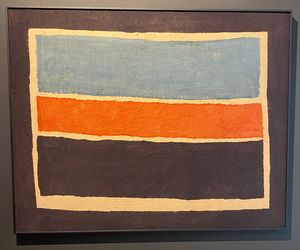The fanfare around the much touted opening of the Nita Mukesh Ambani Cultural Centre (NMACC, cleverly pronounced ‘en-mac’) has diminished. Sadly, so has the fuss around one of the most excellent exhibitions ever put together with India as its focus. The ‘India in Fashion’ showcase highlighted the global influence of Indian embroideries, textiles, drapes, motifs and design language.
I have not seen anything like this. With more than 140 items from celebrated museums and important collections from all over the world—sourced by Hamish Bowles, and mounted over nine rooms like its a Broadway performance by Patrick Kinmonth and Rooshad Shroff—the showcase was nothing short of extraordinary. It must be considered that one did not have to board an expensive international flight to watch a show of this magnitude and finesse. One could just drive to the convention centre and valet park your car for free. I went only twice, and I am sad it is over.
On display were Alexander McQueen’s armadillo dress and shoes, inspired by the Indian green-blue beetle, and worn by Lady Gaga. Clothes by Madame Grès, Schiaparelli, Zhandra Rhodes, and so many others. Federico Forquet made a dhoti-inspired jumpsuit in printed silk in 1967. Indian chintz inspired clothes, especially a jama (long coat) worn by George IV. A chikankari white muslin dress from 1805, from a museum in Bath. Brocade dresses and jackets made by Gabrielle ‘Coco’ Chanel. John Galliano’s bejewelled dress for Dior, made for the Princess of Kapurthala. A zardozi four-paneled skirt. Belgian legend Dries Van Noten’s graduation collection dress that was formerly a sari. A moss-green lehenga made by Valentino for Isha Ambani Piramal. Indophile Christian Louboutin’s embroidered shoes. A custom Dior sari in silk and gold lamé.
Clearly the influence of Indian craft on international couture is immense, if not acknowledged. Thankfully, Indian designers like Tarun Tahiliani, Abu Jani-Sandeep Khosla, Sabyasachi Mukherjee, Anuradha Vakil, Rahul Mishra and Manish Malhotra (all of them were also on display), have built illustrious careers through them.
For the last two weeks, another exhibition is on at a Mumbai gallery—47A at Khotachiwadi. Here, it is best advised that you don’t drive your car. Khotachiwadi—an East-Indian colony with old Portuguese homes—is largely a pedestrian-only street. Kachchh: Born Again is a testament to what Indian artisans can do in a contemporary design language. Put together by Satish Reddy—a former Infosys-Accenture employee who moved to Kutch to work with artisans at the Khamir Craft Centre in Bhuj—the incredible wall panels are created by dyers and weavers from here. The inimitable Srila Chatterjee’s Baro Market, that has been credited with mainstreaming crafts, has curated the show.
Aafasil has used his techniques of making copper bells to shape animals instead. Champa Siju has woven in wool, silk and cotton six Piet Mondrian-style wall panels. Dhaj is a studio that makes elegant brass cutlery. Imran and Zuber Khatri’s shibori wall panels are inspired by Mark Rothko, while Jabbar and Abdullah Khatri have used clamp-dying to make Rothko and Raza inspired textiles for the walls. I am absolutely in awe of Namda, or the craft of wool felting. Namda figurative panels by Karim Mansuri can rival a master’s oil painting. As can the beautiful ajrakh art by Khalid Amin Khatri and the Klee-inspired little Rabari embroidery panels by Puvar Ben. Kharad pieces by Ramesh Marwada and Daya Kumar are almost Aztec in their design. Shakil Ahmed Khatri’s batik panels and Miya and Zuma Sangar’s ari mochi swatches were simply extraordinary.
When craft can be couture as well as art, why is the artisan not a designer or an artist?


